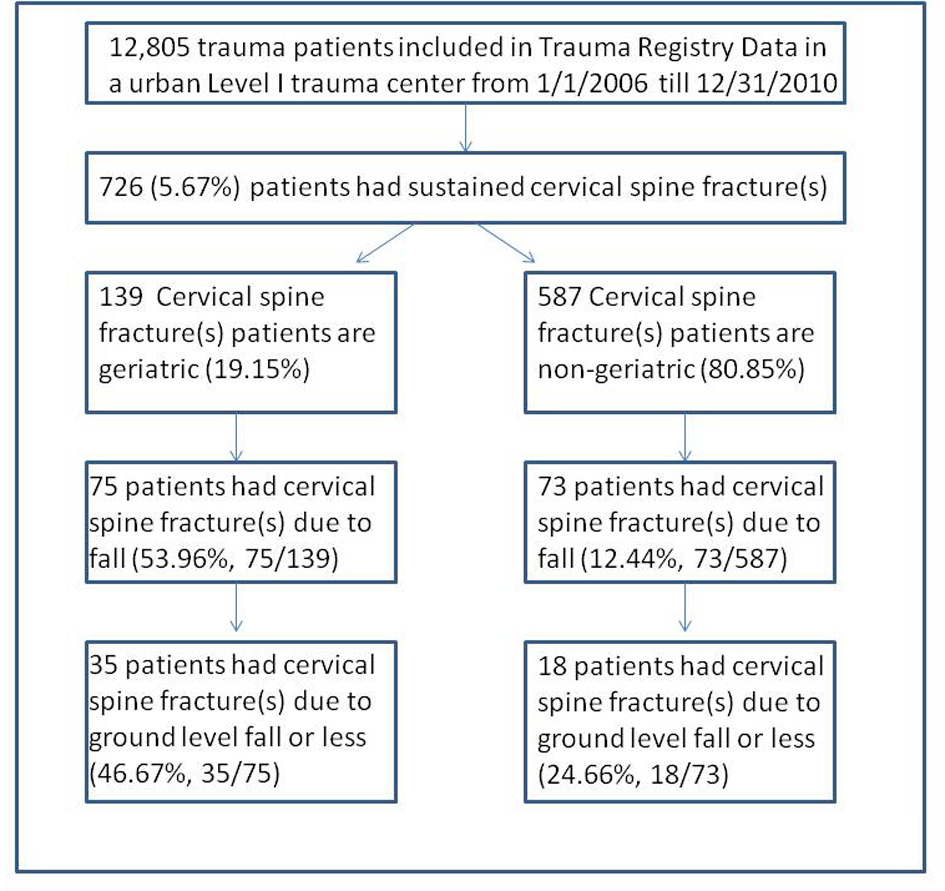| SD: standard deviation; MVC: motor vehicle collision; * Others: including E-code 805.2 (pedestrian hit by rolling stock), 807.8 (railway accident of unspecified nature injuring other specified person), 826.1 (pedal cycle accident), 910.9 (accidental drown/submersion), 916.0 (struck accident by falling objects), 918.0 (caught accidentally in or between objects), 919.2 (machinery accident), 925.2 (accident electric current - industrial wires/appliance/machinery), and 958.8 (suicidal/self injury-hanging), etc. Basic characteristics of trauma patients with C-spine fractures. Geriatric trauma patients tended to have male in predominance (P < 0.001), sustain more C-spine injuries due to fall, whereas in non-geriatric patients C-spine injuries mainly occurred from MVC (P < 0.001). |
